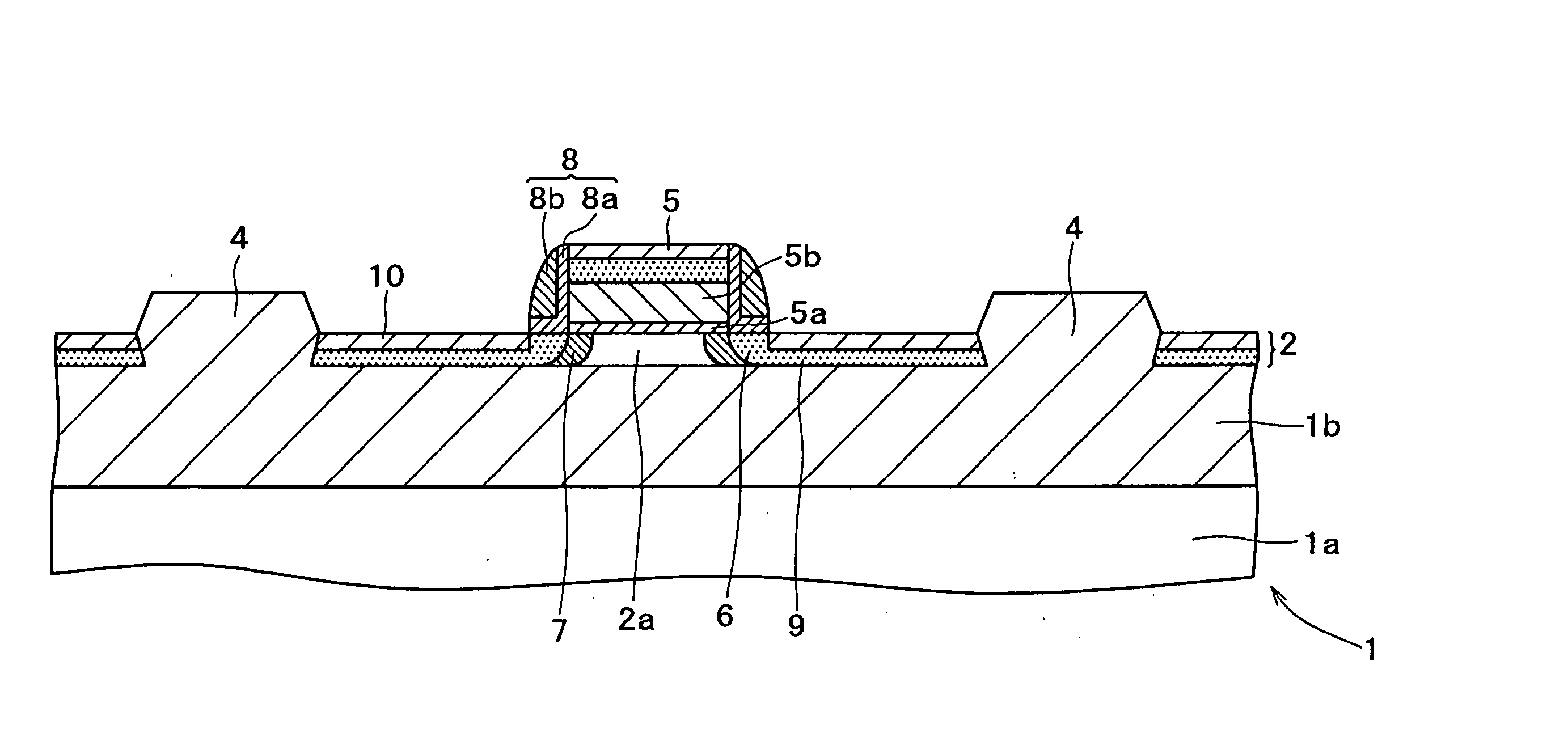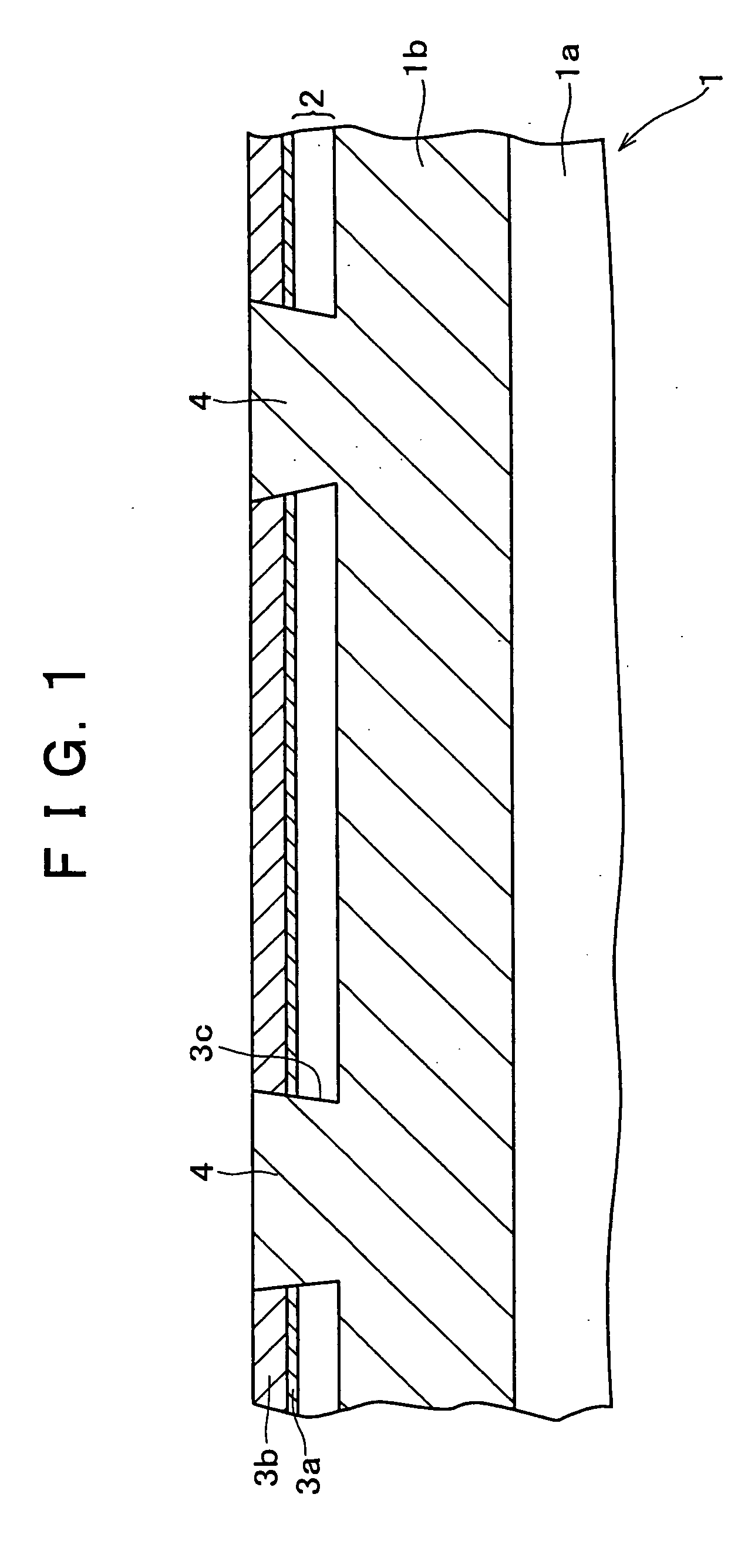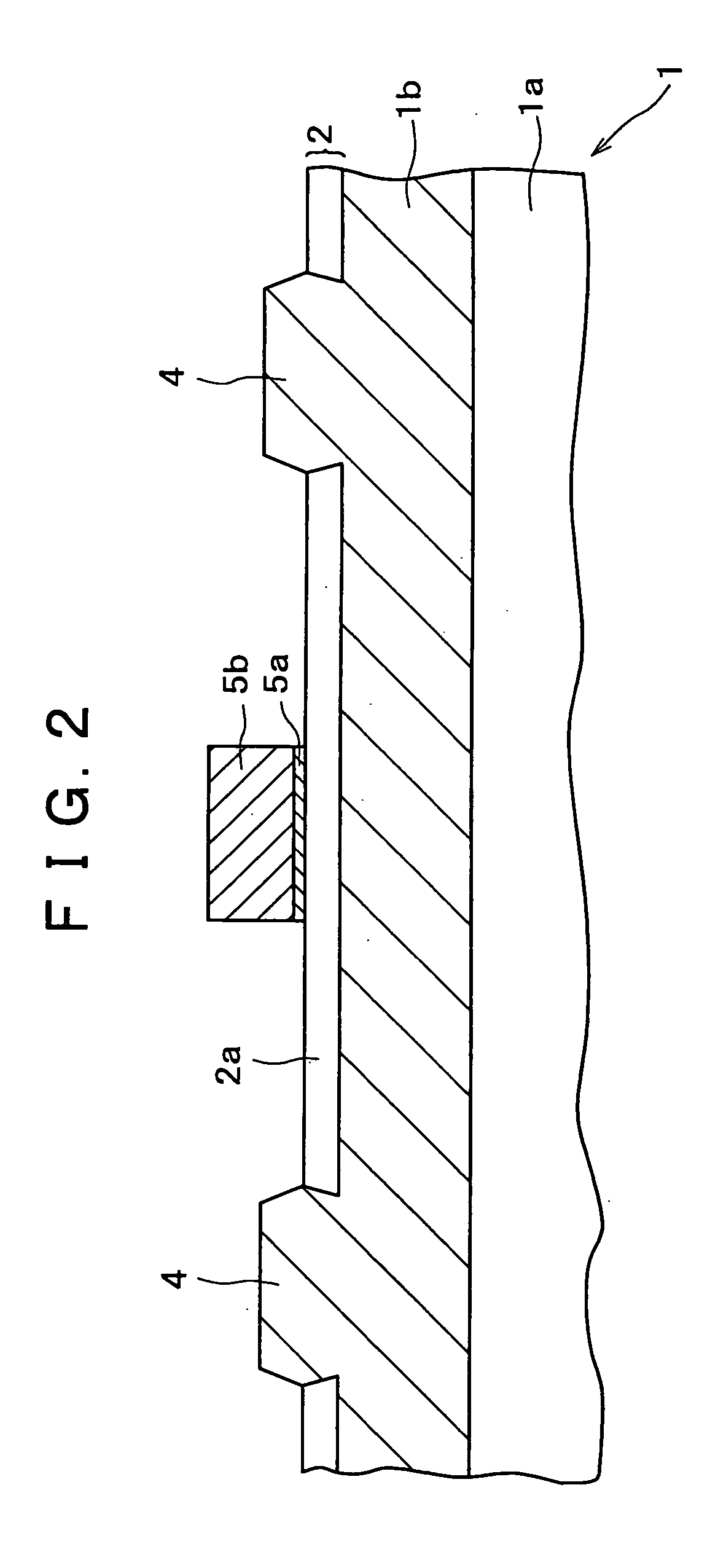Method of manufacturing semiconductor device
a manufacturing method and semiconductor technology, applied in the direction of semiconductor devices, electrical devices, transistors, etc., can solve the problems of lowering the driving capability, reducing parasitic resistance, and raising the sheet resistance of the extension portions, so as to reduce parasitic resistance, improve the roll-off characteristic, and achieve sufficient driving capability
- Summary
- Abstract
- Description
- Claims
- Application Information
AI Technical Summary
Benefits of technology
Problems solved by technology
Method used
Image
Examples
example
[0046] An example of the method of manufacturing a semiconductor device (SOI-MOSFET) according to the present embodiment will be described in detail below, based on the drawings (which show respective manufacturing steps). First, in FIG. 1, an SOI substrate 1 in which an SOI layer 2 in the form of a thin film (for example, 33 nm in thickness) is formed on an Si substrate 1a with a comparatively thick buried oxide film (for example, an oxide film of 100 nm in thickness) 1b therebetween was used, a thermal oxide film 3a (for example, 10 nm in thickness) was formed on the surface of the SOI layer 2 (upon this formation, the thickness of the SOI layer becomes about 29 nm), and thereafter an Si3N4 film 3b (for example, 100 nm in thickness) as a protective film for CMP (chemical mechanical polish) was formed on the surface of the thermal oxide film 3a by a low pressure CVD (low pressure chemical vapor deposition) method.
[0047] Then, only the portions of the Si3N4 film 3b where the device...
PUM
 Login to View More
Login to View More Abstract
Description
Claims
Application Information
 Login to View More
Login to View More - R&D
- Intellectual Property
- Life Sciences
- Materials
- Tech Scout
- Unparalleled Data Quality
- Higher Quality Content
- 60% Fewer Hallucinations
Browse by: Latest US Patents, China's latest patents, Technical Efficacy Thesaurus, Application Domain, Technology Topic, Popular Technical Reports.
© 2025 PatSnap. All rights reserved.Legal|Privacy policy|Modern Slavery Act Transparency Statement|Sitemap|About US| Contact US: help@patsnap.com



